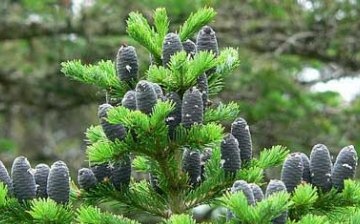Fir. Photo and description
The pine family has many different evergreen genera and tree species that delight our eyes all winter long. Among them is the fir - a cone-shaped, slender plant with odorous two-colored needles, lush, sprawling branches.
Most of the firs are common in the subtropics and temperate climatic zone. Only Siberian and balsamic plants grow to the north and withstand more severe conditions with low temperatures. In some species, the lower branches are very low and may even root in the ground.
Large fir cones are directed upwards, they sometimes have a very interesting color, decorate the plant in summer and autumn, and fly around in the winter. The bark of young plants is usually smooth and only with age acquires scales or cracks.
Some types of fir have a very interesting color, silver-gray or bluish. They can be excellent ornamental plants in estates and parks. Alleyways are also decorated with them. Most of these plants can be frost-sensitive, but most often at a young age. Mature plants are already more resistant in this regard.
In construction and for the manufacture of furniture, fir is rarely used, more in the pulp and paper industry. The resin of this tree is used for medical purposes, in the manufacture of soap and other perfumery products, household chemicals. Fir also supplies us with camphor and varnishes.
You can sew a broken off twig into a pillow and fall asleep under a pleasant coniferous scent. Or scare away moths in the closet with it. And with sciatica or colds, you can take
fir baths.



